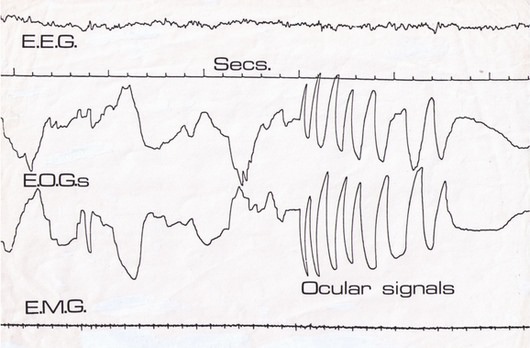|
|
Tibetan Monks have used dream control for more than a thousand years, in the philosophy of dream yoga.
However, the modern term "lucid dreaming" was not created until the 1800s by the passionate dream researcher Marquis d'Hervey de Saint-Denys.
The concept of lucid dreams became popularized by Celia Green in the 1960s, who pointed out the scientific potential of self awareness in dreams. She was the first to make the link with both REM sleep and false awakenings.
The first scientific evidence of lucid dreaming was produced by the British parapsychologist Keith Hearne in 1975. He did it by catching the pre-determined conscious eye movements from a lucid dreaming volunteer.

A sequence of left-right ocular signals, recorded by Keith Hearne using a Grass polygraph.
Hearne's research slipped under the radar of the mainstream science journals, and it was Stephen LaBerge at Stanford University who became famous for replicating this experiment and formally publishing his findings.
A prolific lucid dreamer himself, LaBerge founded The Lucidity Institute in 1987 to explore the question: what is lucid dreaming? His mission is to research the nature and potential of consciousness in dreams... A riddle that may one day offer considerable advances in our understanding of the human mind.
world-of-lucid-dreaming
0 nhận xét:
Đăng nhận xét